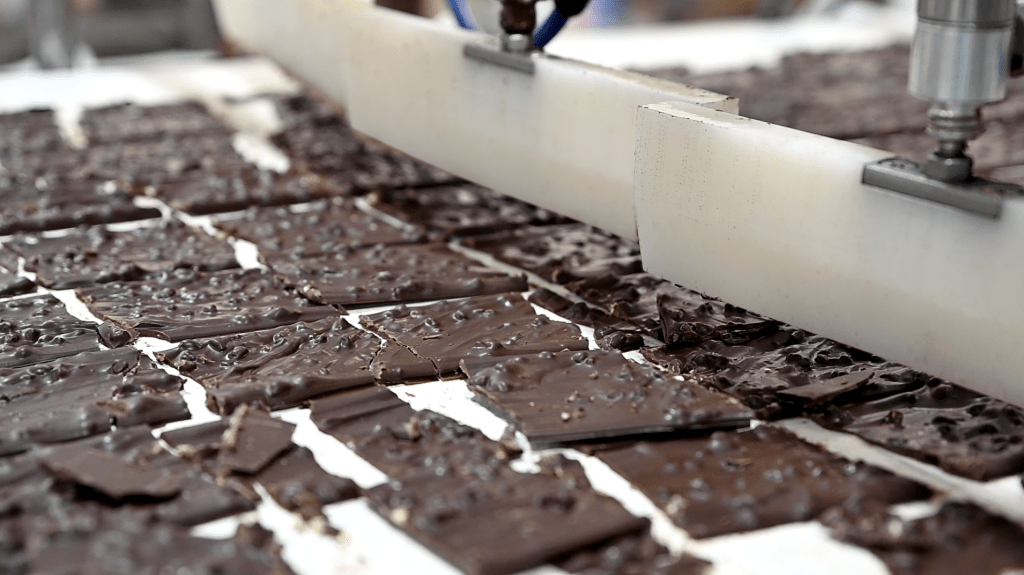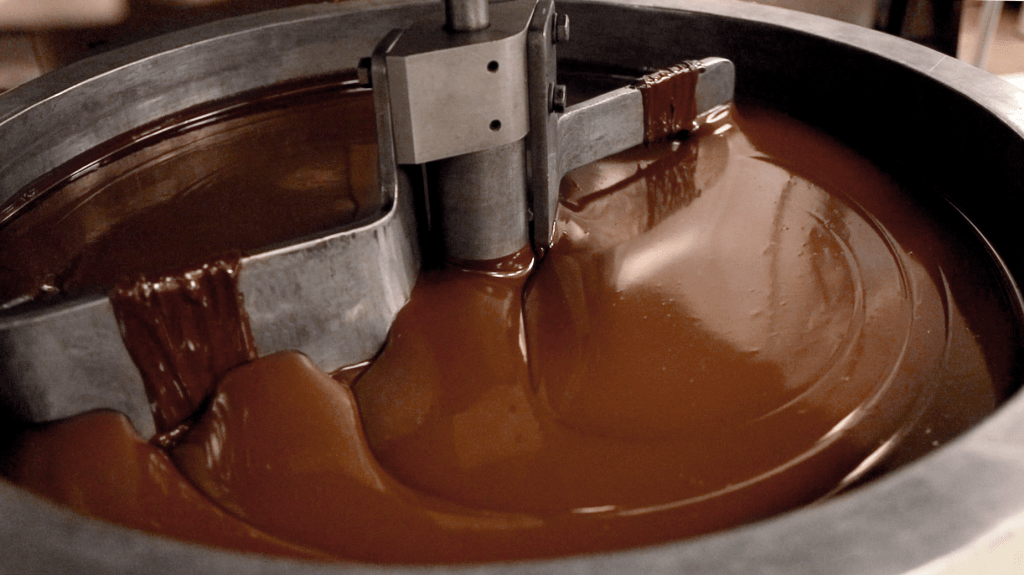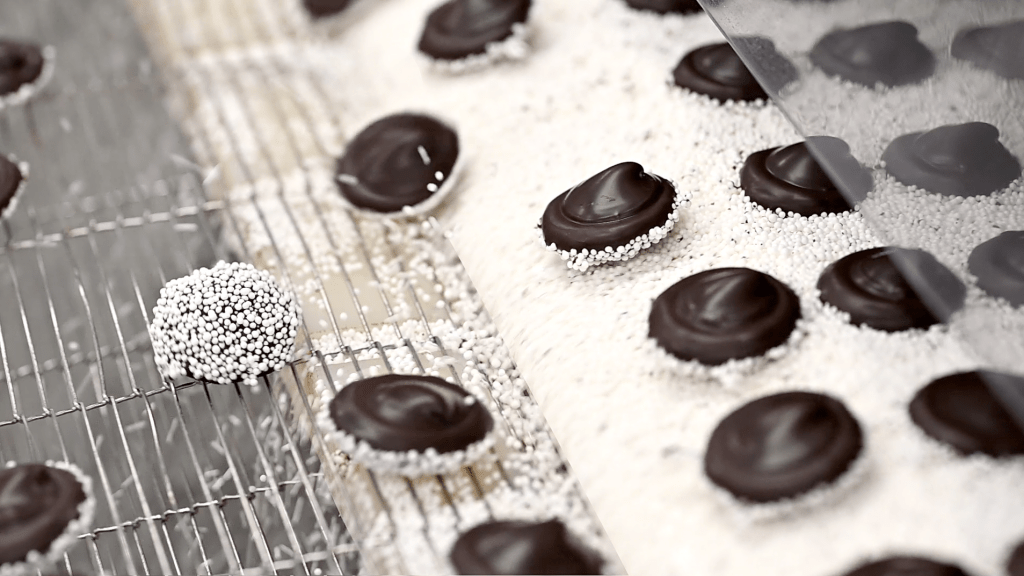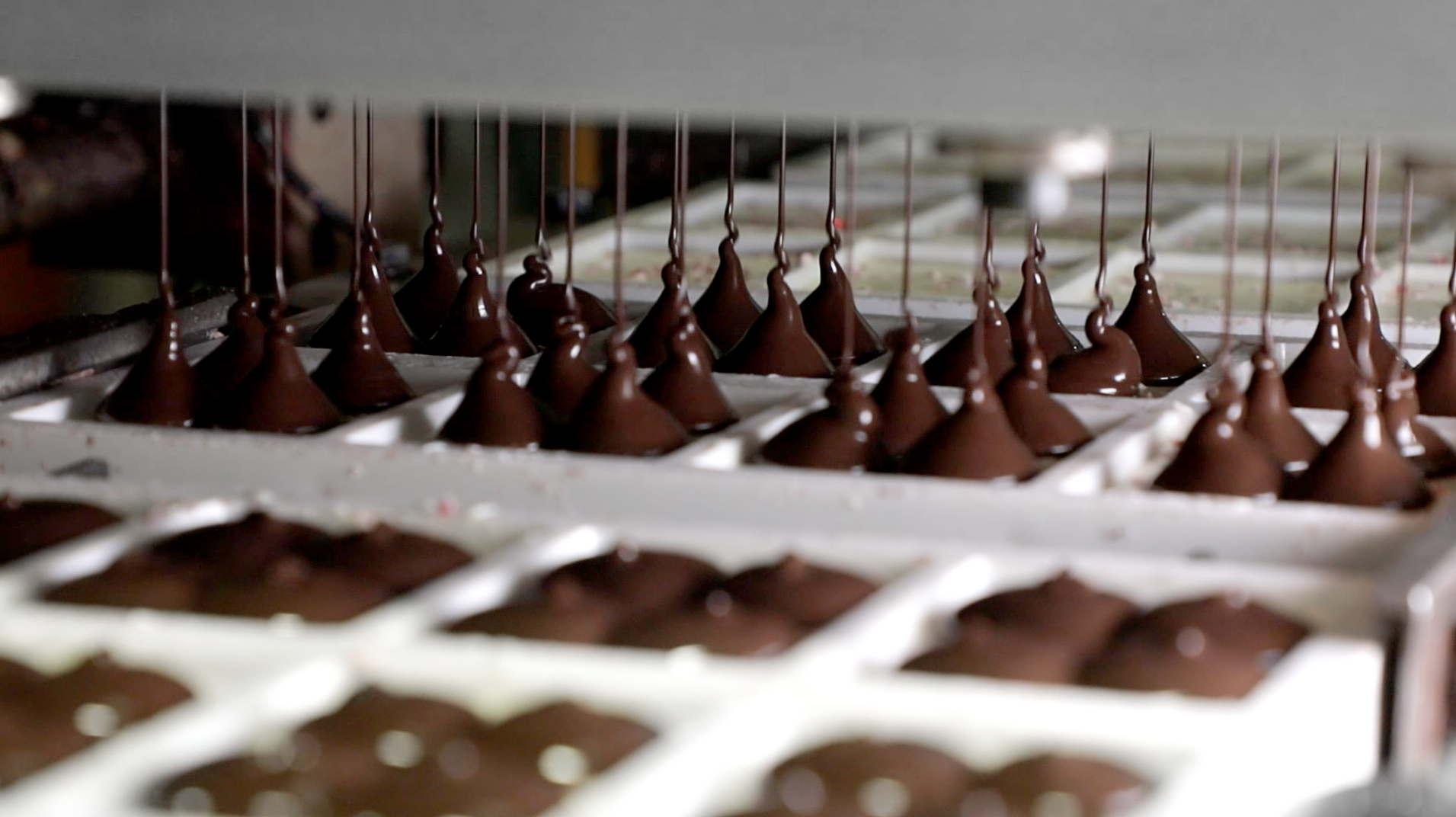Photography by Jason Coronel
There’s no denying that chocolate is an everyday consumer favorite, with sales totaling $21.9B in 2020, according to the National Confectioners Association. But did you know that until the 1800s, chocolate was an extravagance only experienced by the elite? Though expense was a factor, chocolate wasn’t available to the masses because it was labor-intensive to process the beans and create the final product. Mass manufacturing helped bring our favorite confection to the world.
With Labor Day upon us (September 6 this year) we are honoring the innovators who put in all the hard work to make chocolate manufacturing what it is today. Read our timeline of major chocolate manufacturing milestones and count the familiar names.
1764 – Getting into the Daily Grind
John Hannon, with backing from Dr. James Baker, starts grinding cocoa beans for chocolate making in a grist mill in Boston, Massachusetts. Before this time, cocoa beans were ground by hand.

1828 – Hot off the (Cocoa) Presses
Dutch chemist Coenraad Johannes van Houten (or his father, Casparus – we’re not quite sure), invent the cocoa press, a device that squeezes the fatty butter from cocoa beans, leaving a dry cocoa cake that can be ground into a fine powder. Cocoa powder drastically reduced the cost of making chocolate, so it became more accessible for anyone with a desire to create chocolate confections. Cocoa powder could be added to a liquid and poured into molds to create confections, or stirred into hot water for a hot cocoa drink. Chocolate was first enjoyed as a beverage long before being made into bars.
It was also during this time that Dutch cocoa was born. The process of creating Dutch cocoa entails adding alkali to cocoa beans during pressing stage to help remove bitterness and create a smoother, softer flavor. Dutch cocoa or Dutched cocoa is an ingredient used in lots of modern chocolate manufacturing, in some sauces, hot cocoa, ice cream, and some baking recipes.

1847 – Raising the (Chocolate) Bar
J.S. Fry & Sons in England make the first chocolate bar out of cocoa butter, cocoa powder, and sugar. In the same year, competing manufacturer Cadbury (yes THAT Cadbury) introduce their own chocolate bar.

1870’s – Udder-ly Rich
Swiss chocolatier Daniel Peter uses powdered milk invented by Henri Nestlé (yes THAT Nestlé) to create the first milk chocolate bar. The addition of powdered milk created a creamy texture and caramel flavor customers were crazy about. Fun fact – powered milk was originally intended as infant formula. We’re sure glad Daniel Peter experimented with Nestle’s creation.
1879 – Smooth Moves
Rodolphe Lindt (yes THAT Lindt) invents the conching machine that evenly distributes cocoa butter to give chocolate a velvety texture. Conching is a proprietary process, as unique as each chocolate maker, and is responsible for the signature taste. Conching varies from manufacturer to manufacturer and gives us lots of diversity in the final product.

1900 – Assembly (Line) Drive to Popularity
Milton Hershey (yes THAT Hershey) pioneers the first chocolate assembly line production of the iconic Hershey bar in Hershey, Pennsylvania.
1987 – Setting new Trends
Nassau Candy enters the chocolate manufacturing space, manufacturing fan favorites like our oversized chocolate nonpareils with their signature rounded bottoms, and crowd-pleasing sea salt caramels with their palate-pleasing warm caramel flavor and smooth rich chocolate, elevated to new heights with a light sprinkle of sea salt. Nassau Candy continues to innovate with new twists on the classics like our pumpkin spice bark and s’mores bark.
Check out our entire collection of factory fresh specialty bulk chocolates
Expand your chocolate knowledge here

Hi! Let us know what's on your mind.